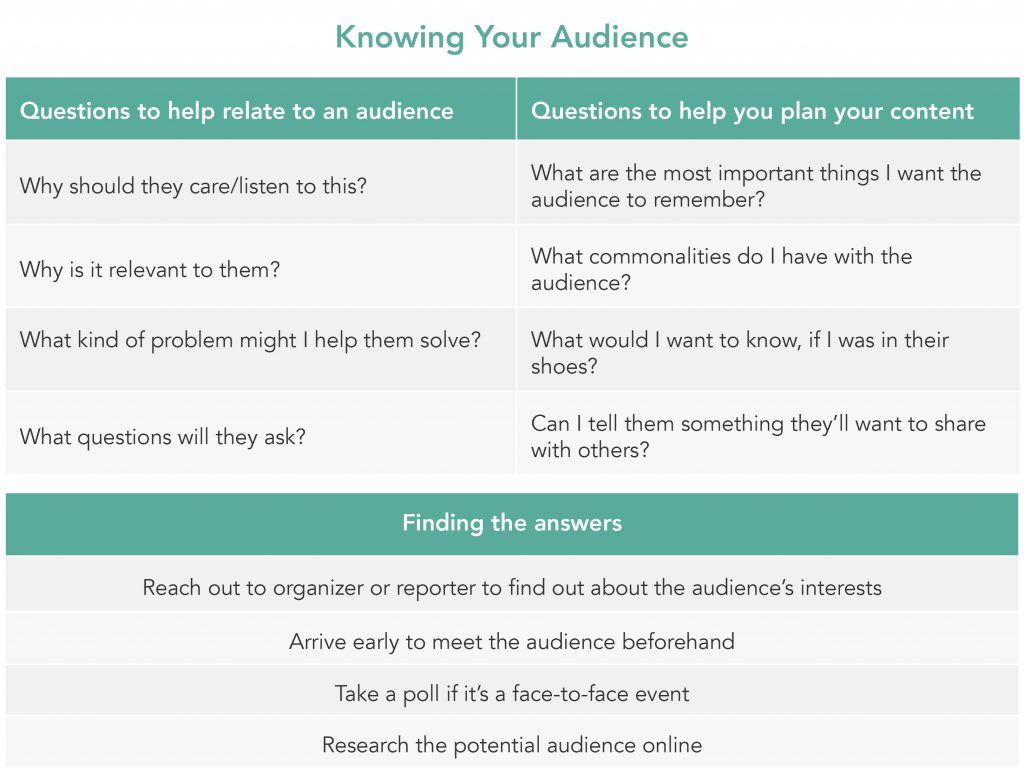Success of a scientist can hinge on how well we can communicate what we know
Serving on scientific or government panels, being approached by media for expert opinions, explaining a technology or product to a sales team or prospective clients, giving a talk at a public education event, writing a blog article or social media post on a scientific topic … I believe many nutritionists and food scientists will be familiar with some of these scenarios.
What do these scenarios have in common? It all involves communicating science to people who may not be scientists, a skill called ‘science communication’. It is not easy to engage non-scientist with scientific topics. They have plenty of things competing for their attention, jargon can be a barrier if it’s not explained, and the relevance to their life may not be immediately clear. Based on my science communication background in the Netherlands, and experience at the EU FoodRisC (Food risk and benefit communication) project, I offer three science communication tips.

Tip 1: Know your audience
Imagine a nutritionist travelled to another country to give a talk on folic acid fortified foods and their importance during pregnancy at a huge food festival. She was quoting the best-known health organisations, citing hard statistics, telling real personal stories; everything she thought she needed to do to teach an audience. She was almost running out of her ‘weapons’. However, the audience still didn’t seem engaged.
Feeling disappointed, she finished her talk and sat back to the bench. Someone kindly tapped on her shoulder “you did a very good job, it’s just that the women in the audience did not see the relevance because they might not be planning for a baby. The funny thing is, in this country half of pregnancies are unplanned”.
Suddenly, this nutritionist realized where the problem was: she didn’t connect with her audience. She should have first acknowledge that folic acid is relevant even to women who are not planning a pregnancy.
One of the key fundamentals highlighted in the European Commission’s science communication idea book and AAAS (American Association for The Advancement of Science)’s communication toolkit is audience engagement. Basically, good science communication should be based on understanding of the audience. Scientists should arouse the audience’s interest and sense of relevance at the start, and then communicate their ideas in ways that meets the audience’s expectation.

So, how to do this? When preparing for presentations, media interviews, etc, scientists could ask themselves a few questions (see the figure below). To get the answers, they could reach out to the organizer/reporter/point of contact for information about the audience’s interest. They could arrive early to meet the audience or take a quick poll if it is a face-to-face communication event. Or they could do a bit of research online. Whenever possible, think carefully about the needs and expectations of your audience in advance.

Tip 2: “Weather is your current mood, and climate is your personality” – the power of analogies and metaphors
Struggling with explaining something complex? Analogies and metaphors can be useful tools. Basically, you use comparisons, and refer to things the audience is familiar with to explain the scientific concept. Analogies and metaphors have been widely used by good science teachers to build “conceptual bridges” for pupils to grasp concepts. For sure, the same methods could be used for communicating with adults. Below are a few excellent examples showing how analogies and metaphors can help to explain food and nutrition related concepts. The examples are from the Kerry Health and Nutrition Institute best articles of 2018 and Food Insight (the official site of the International Food Information Council Foundation).
Examples of using analogies and metaphors to explain scientific concepts
|
Tip 3: Words matter
My first experience of science communication was to explain my bio-technology dissertation to my parents at the graduation ceremony. That was 12 years ago. I was passionately describing how I built up a ‘model’ to simulate the interactions between two proteins. After five minutes, my dad could not resist to interrupt: “so this model is not a person, is it?”. Apparently, he was thinking about a ‘fashion model’, and that is what an ordinary person normally relates to when they heard of the word ‘model’.
The common definition of a word may vary between scientists and the public. To avoid miscommunication, it is worth checking this table − ‘Terms that have different meaning for scientists and the public’. A more complete version is available at this public Google Docs spreadsheet. This brilliant material was generated by Dr. Thaler, an ecologist and population geneticist who is enthusiastic about public engagement with science. Below, I’ve extracted some examples to give you a taste.
Terms that have different meaning for scientists and the public
More resources on science communication
- AAAS Communicating Science Workshops. AAAS offers standard workshops, mini-workshops, shorter seminars and individualized coaching on science communication. Their facilitators/coaches can travel to your organisation to do group or individual based training The American Association for the Advancement of Science (AAAS) is an US based international NGO, the world’s largest general scientific society and the publisher of the well-known journal ‘Science’.
- EURAXESS 2017 science communication brief books (very visual and easy to read): Three free downloadable Idea Books with hands –on tips regarding science communication: 1) communicating science; 2) presentations; and 3) graphs and graphics. These materials are used at the Science Communication workshop organized by EURAXESS (an EU initiative supporting professional researchers). All these three books are like presentation hand-outs with many visual elements, so the readers will never get bored.
- (European Commission) Communicating Science – a scientist’s survival kit. A 76-page book with thorough but easy-to-digest knowledge on science communication.
- Brown University’s Quick Guide to Science communication. A 16-page documents with bullet-point-style principals to guide you through science communication. This material can be used as a check list, but it also offers links for further reading.
- Two resource centers regarding communicating science to the Media. 1) http://www.ashg.org/press/scientist_media.shtml, 2) https://www.scidev.net/global/content/practical-guides.htmlMost relevant to scientists who may have to deal with media in some cases, and some proactive ‘ambassadors’ who are keen to communicate new science or new technologies through media.

 Christine is a Kerry Group Newman Fellowship Scholar based in University College Dublin (UCD). She describes herself as an ‘international’ citizen with multi-discipline backgrounds. She was born in China and completed her first Master’s degree in Biochemistry. She then gained her Science Communication degree in the Netherlands, and her PhD in Public Health and Consumer Science at UCD.
Christine is a Kerry Group Newman Fellowship Scholar based in University College Dublin (UCD). She describes herself as an ‘international’ citizen with multi-discipline backgrounds. She was born in China and completed her first Master’s degree in Biochemistry. She then gained her Science Communication degree in the Netherlands, and her PhD in Public Health and Consumer Science at UCD. 

